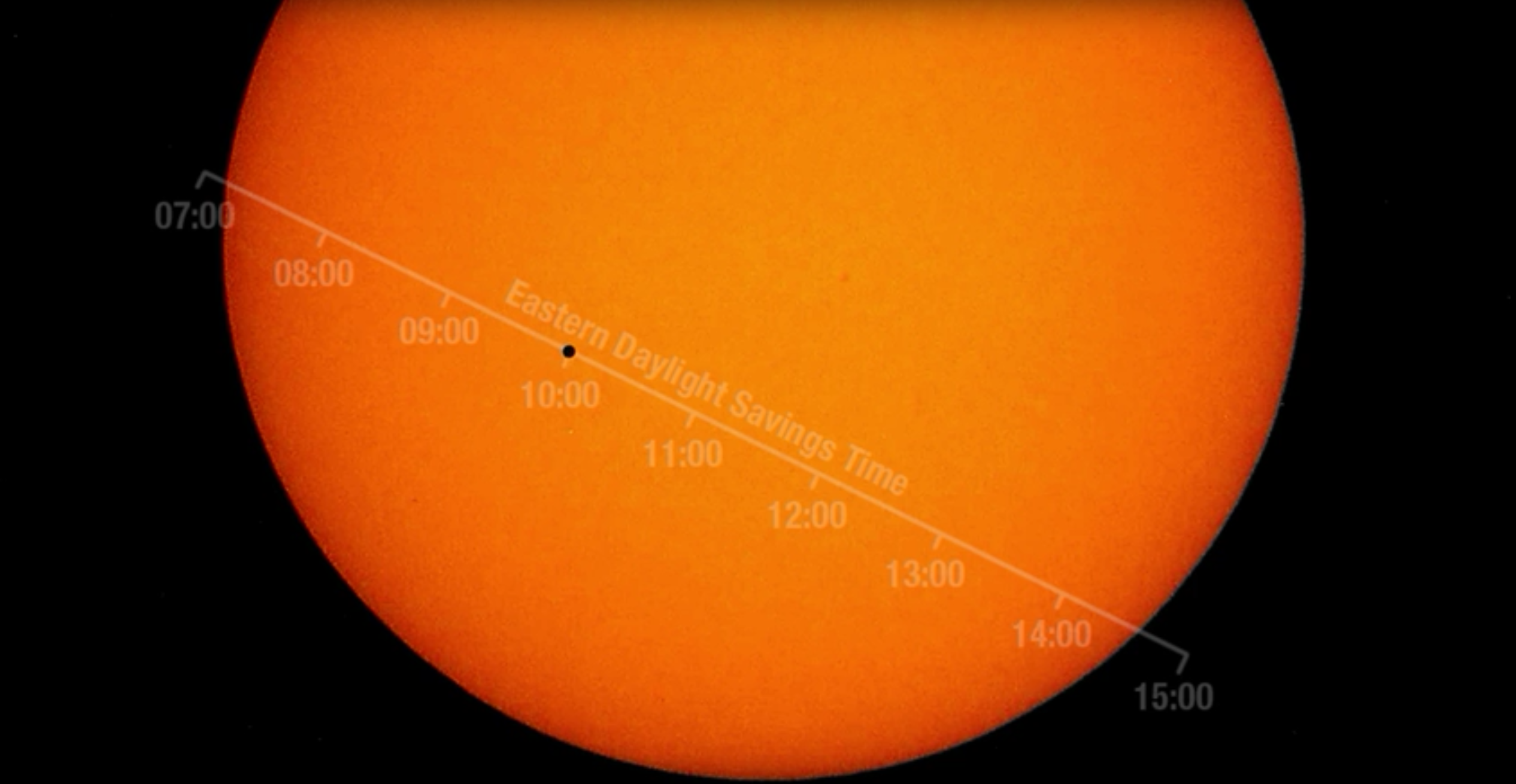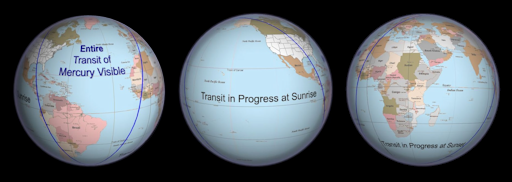It’s not quite as nifty as the Transit of Venus (for which Sousa wrote a march), but it is still very nifty.
As viewed from your planet, Mercury will pass in front of your yellow sun on 9 May.
From NASA’s JPL:
In the News
It only happens about 13 times per century and hasn’t happened in nearly a decade, but on Monday, May 9, Mercury will transit the sun. A transit happens when a planet crosses in front of a star. From our perspective on Earth, we only ever see two planets transit the sun: Mercury and Venus. (Transits of Venus are even more rare. The next one won’t happen until 2117!) On May 9, as Mercury passes in front of the sun, viewers around Earth (using the proper safety equipment) will be able to see a tiny dark spot moving slowly across the disk of the sun.
[…]
Then and Now
In the early 1600s, Johannes Kepler discovered that both Mercury and Venus would transit the sun in 1631. It was fortunate timing: The telescope had been invented just 23 years earlier and the transits wouldn’t happen in the same year again until 13425. Kepler didn’t survive to see the transits, but French astronomer Pierre Gassendi became the first person to see the transit of Mercury (the transit of Venus wasn’t visible from Europe). It was soon understood that transits could be used as an opportunity to measure the apparent diameter – how large a planet appears from Earth – with great accuracy.
In 1677, Edmond Halley observed the transit of Mercury and realized that the parallax shift of the planet – the variation in Mercury’s apparent position against the disk of the sun as seen by observers at distant points on Earth – could be used to accurately measure the distance between the sun and Earth, which wasn’t known at the time.
[…]
Go over there for tips on HOW TO WATCH IT. For example, if you are human don’t be stupid and stare straight into your planet’s yellow sun with your naked eyes.
And from Spaceweather:
People on almost every continent can see at least some of the transit. These global visibility maps are courtesy of ShadowandSubstance.com:
Now for the bad news: Mercury is so small, you can’t see the transit with the unaided eye. Safely-filtered solar telescopes are required. Don’t have one? In that case, you can watch the transit online, broadcast live from the Coca-Cola Space Science Center in Columbus, Georgia. Also, NASA’s Solar Dynamics Observatory will transmit images from space.




































We’re lacking a “Transit of Mercury” march.
Thank you for this!
(Where would one have to be to see a Transit of Pluto? – on Voyager 2?)
Clear skies so far where I am. Hopefully this evening, too!
“Where would one have to be to see a Transit of Pluto? – on Voyager 2?”
Well, to see a transit, you have to be farther out than the planet and the sun has to be big enough relative to the planet to easily see (its a trigonometry problem). That is why you won’t see a transit of Jupiter, for instance – only Mercury and Venus, since they lie closer to the sun than the Earth.
The Chicken
P. S. The relative size of the sun and Pluto at the distances they are from each other may mean that Voyager would not have the resolution to see any such transit (I haven’t done the calculations).
The Chicken
Clouds! Clouds! I’m surrounded by clouds!!! :(